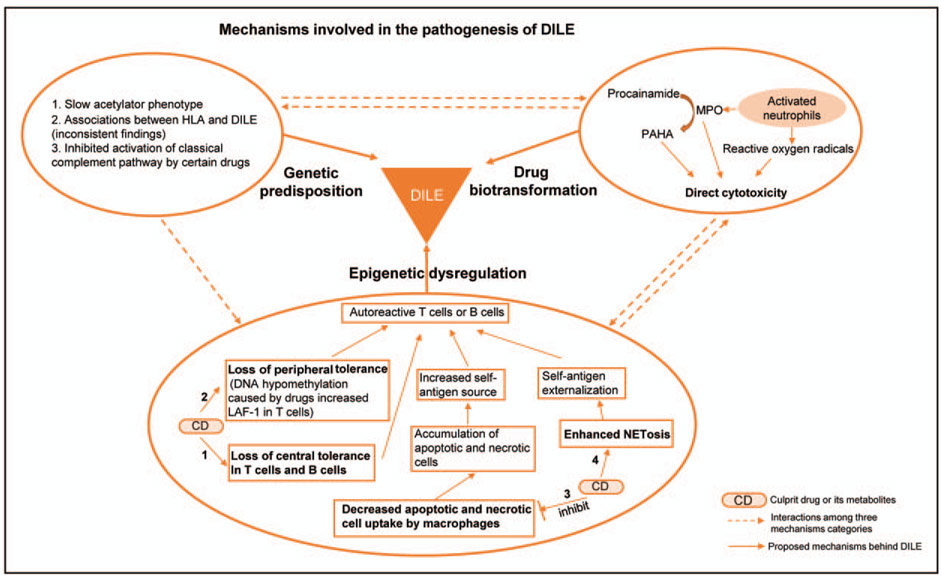FIGURE 1.
Mechanisms involved in the pathogenesis of drug-induced lupus erythematosus. Genetic predisposition, drug biotransformation and epigenetic dysregulation are three important components of current proposed pathogenic mechanisms of DILE. Instead of working independently, these factors are likely to interact with each other to cause DILE. Genetic predisposition: Studies revealing genetic predisposition could be summarized in three main aspects, listed in the left upper circle. Biotransformation: Procainamide undergoes neutrophil-mediated oxidative metabolism to produce procainamide hydroxylamine (PAHA). PAHA, myeloperoxidase (MPO), and reactive oxygen species contribute to direct cytotoxicity. Epigenetic dysregulation: Drugs and some drug metabolites exert epigenetic dysregulation on T cells and B cells (1,2), macrophages (3) and neutrophils (4), which eventually leads to autoreactive T cell and B cell generation, triggering DILE.

